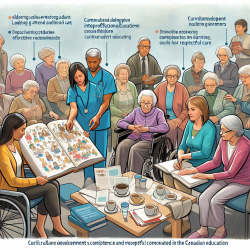In the rapidly evolving field of speech-language pathology, staying abreast of the latest research findings and theoretical models is crucial for practitioners aiming to enhance their therapeutic techniques and outcomes. A deep dive into the theoretical underpinnings of language deficits can provide invaluable insights for clinicians seeking to refine their practice. Drawing on the research presented in "Theoretical Perspectives on Language Deficits," this blog post aims to guide practitioners on implementing these theoretical models into their clinical practice and encourages further exploration into the complexities of language processing and disorders.
At the heart of improving speech-language pathology practice lies the understanding of how language is processed, from the initial intention to express a thought to the final articulation of that thought. The work by Willem Levelt, as reviewed in the resource, breaks down the speech production process into distinct components: the Conceptualizer, the Formulator, and the Articulator, each playing a pivotal role in transforming thoughts into spoken words. This model not only sheds light on the complexities of speech production but also provides a framework for identifying where language deficits may arise.
For practitioners, integrating this theoretical model into diagnostic assessments means a more nuanced identification of the specific components of language processing that may be impaired in individuals with language disorders. This precision can lead to more targeted and effective intervention strategies. For instance, interventions could be tailored to focus on enhancing the conceptualization of ideas before speech production or on refining the phonetic planning processes, depending on where the deficit lies.
Moreover, Levelt's model emphasizes the importance of continuous monitoring of speech production, highlighting the role of feedback in detecting and correcting errors. This aspect of the model can inspire speech-language pathologists to incorporate more self-monitoring strategies into therapy sessions, empowering clients to become more aware of their speech production process and to self-correct more effectively.
However, translating theoretical models into practice is not without its challenges. It requires clinicians to critically evaluate the applicability of these models to their diverse client base and to adapt intervention strategies accordingly. Engaging in further research and continuing education, through reading comprehensive resources like the one discussed, attending workshops, and participating in professional networks, is essential for staying informed about the latest theoretical developments and their practical implications.
In conclusion, embracing theoretical perspectives on language deficits can significantly enrich the practice of speech-language pathology. It offers a deeper understanding of the intricacies of language processing and provides a solid foundation for developing more sophisticated and effective therapeutic interventions. Practitioners are encouraged to delve into these theoretical models, critically assess their relevance to their work, and continue to seek out opportunities for professional growth.
To read the original research paper, please follow this link: Theoretical Perspectives on Language Deficits.










